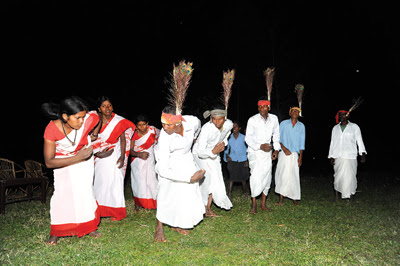The moves of the Terai
The Terai fields of Nepal are home to individuals of different ethnicities and distinctive societies. While numerous Hindu celebrations are normal and like different locales of the nation, the Terai individuals likewise have celebrations and along these lines, various moves that are one of a kind to their group and the district.
The Horiya move is performed by individuals from the Tharu people group amid the celebration of Holi (March). This prominent and clamorous hit the dance floor with steps that communicates the desirous opinions of young men and young ladies sees the artists toss hues on each other. Mungrahawa move has its causes in the Tharu people group of western Nepal. In it, young men conveying wooden sticks (mungros) move enthusiastically to the beat of their own wooden sticks and drums. This move saw a restoration after Chitwan's Machan Wildlife Resort advanced it as a fitting excitement routine to make generally sit still nights all the more energizing for sightseers at their resort.
An expert move of western Terai, the Kaharba move sees artists move from way to entryway, and even starting with one town then onto the next, singing and moving in little gatherings. The gifts they get after every execution nourishes these meandering troupes. While the Chanchar routine is a Tharu move that is given to Lord Krishna, Jhinjhia move respects Goddess Durga and happens amid Dashain in the Terai. Performed around evening time, by young ladies who hit the dance floor with smoldering lights on top of water vessels adjusted on their heads, it requires a heaps of practice with respect to the artists.
A demonstration of a history that imparts a considerable measure of social characteristics to its Southern neighbor India, the Jat-Jatin move is really a prominent move in India's North Bihar. Moonlit evenings amid the storm downpours see the same move performed in Nepal's Mithila locale (Janakpur). Two gatherings of young ladies, every drove by a pioneer, stand on inverse sides, and express different estimations through move developments alongside an artist speaking to Jat and another speaking to Jatin in the meantime telling an account of two significant others and the trials they experience before living joyfully a great many. Different moves from the area are the Sama-Chakwa, Sakhiya, Jhumare, Kirtaniya, Bhagata and Dhimal.
Nepal has China to its North, behind the high Himalayas and India to its South, past the vivid fields of the Tarai. Exchange with both nations, through high goes on the Nepal - China outskirt utilized for bargain exchange by the Lhasa Newars (Newar merchants working with Lhasa's brokers) and over the free fringes with India, has been critical to Nepal's battling economy. In any case, it is clear from our social ties with both nations that exchange is yet one of numerous things that pervaded these fringes. Throughout the years, Nepal's area itself, deliberately settled amongst India and China, has made it a blend of societies and customs. Nepal's social legacy itself, move being an imperative piece of it, is sufficiently solid to have a particular personality; carefully protected throughout the years. There are volumes composed about move; all things considered, in a quick changing world where everything is flinging through time, no less than one convention appears to have verse in its movement.

Post a Comment